Kottenbutter of the Bergisches Land
Das Bergisches Land is a mountainous region of Westphalia in Germany. The traditional industry of the area was mining–Westphalia was once known as the land of coal and steel–and working the ore the mines produced. Solingen, one of the largest cities in the region, has been known since the middle ages as the City of Blades due to the quality of the smithing work from the area. Even into the 20th century, the water-powered grinding wheels of the Bergisches Land were turning out precision steel work.
This is not a story about steel or the men who work it, though. This is a story about their lunch.
In Das Bergisches Land, Kottenbutter was their lunch. It is a sandwich made of buttered Schwarzbrot, Kottenwurst, medium-hot yellow mustard, and onion. Kotten is a reference to the Schleifkotten, or grinding cottages where the waterwheels on the Wupper river powered the grinding wheels that sharpened the blades, or later deburred the steel blanks being sent on for industrial uses.
What made this sandwich particularly well-suited for their work? Well, Schwarzbrot (black bread) is a dense sourdough that is traditionally cured for a day or two after baking and is hardy enough to last a week or more after that before consuming–a good choice for a sandwich that might have to sit for hours in workshop conditions before it’s eaten. Kottenwurst is a regional variant of smoked Mettwurst, a sausage of cured minced pork that’s cold-smoked, dried, and either sliced or spread on bread. Though the pork is never cooked, the curing, smoking, and drying process make it shelf-stable, and it can hang at room temperature for weeks before consuming. Onions are a root vegetable and fairly stable at room temperature, and mustard will mostly just become less pungent with time. The only real issue with letting this sandwich stand at room temperature (or warmer) is the butter, but even that will remain stable over the course of a day.
Schwarzbrot
Finding real Schwarzbrot is not easy. I tried making my own, using this recipe. I spent over a week developing a sourdough starter, and then spent a couple of days prepping the dough. The result was not great though–dense, too dense, it never really rose, and the dough never really came together. It looked pretty enough but it was inedible. A real shame. Luckily, I was able to find a German bakery in Tennessee that shipped their Schwarzbrot (along with my wife’s favorite, Brotchen!)
Kottenwurst
Kottenwurst, though. How do you find an obscure German sausage that, despite continued production and the enduring love for this sandwich in a small region of Germany, is just not made anywhere else?
You make it yourself, I guess.
I managed to find a German-language recipe for the sausage online and translate it:
For each KG of (50% fatty, 50% lean) pork:
- 18-20 g curing salt (Prague Powder #1)
- 1g dextrose
- 2g black pepper
- 1g white pepper
- 1g sugar
- 5g mustard seeds
- 1g nutmeg
- 1g sweet paprika
I used about 4.5lbs of pork butt (with some of the fat cap) which works out to just over 2KG, so I basically doubled this recipe. I was also troubled by the complete lack of salt (the nitrites will do the job, but a sausage without salt is like a day without sunshine) and added 1tsp (or about 5 and a half grams) of kosher salt per KG of pork.
Mettwurst is generally ground fairly coarsely, so I mixed the meat with the spices, let it sit in the fridge overnight, then ran it through the large die of my meat grinder, and ran a small portion (about a handful) through the small die afterwards to help bind it all together (since this is to be a dry sausage and there will be no liquid component added).
I then stuffed it into some fibrous artificial casings, the kind you see on summer sausages, and left them to hang for two and a half days before smoking time.
These sausages were already looking quite pretty, but they were not nearly done yet. On the third day, I got out my maze smoker and filled it with oak pellets. The wood used for smoking in Germany is generally beech or alder, but I didn’t have either of those and I thought oak would be a good fit for that type of neutral flavor.
- Preparing to smoke the sausages
- Maze smoker with oak pellets
I hung the sausages in my smoking cabinet and, after using a brulee torch to get the smoker started, let them cold smoke for about 16 hours before removing them and hanging them back up in my garage for another 3 days.
This sausage is similar to a salami, but looser in texture–it can be sliced, sure, but in my experience, often people will just cut open the casing, scoop out the Mett and spread it on bread or crackers or whatever’s handy. I sliced the sausage for this sandwich, but due to the looser texture, the meat did not cohere the way salami would. (It didn’t help that my sausage stuffer broke while I was trying to fill the casings and I ended up spooning it in and squeezing to compress.
- Homemade Kottenwurst, sliced
- Smoked and hung for a week
Showtime
Obscure German bread? Check. Obscure German sausage? Also check. Butter and onions are easy, but what about German mustard?
This Schwarzbrot is dense stuff–not as dense as the terrible stuff I made, but still, the density means that slicing it thinly is best, as the thin slices are more easily chewed and the dense texture helps keep the thin slices from falling apart when the fillings start piling up.
We start with a schmear of butter on each slice. It’s in the name of the sandwich, after all, and bread without butter is almost unthinkable to the German palate.
I put the Kottenwurst on one half and the mustard and onion on the other.
And that’s it, basically! Slap those two sides together and you’ve got a sandwich.
The Verdict
The bread is really very good–I’d be happy eating it simply sliced thinly with some butter or cheese. It’s dense the way true rye bread usually is, from a lack of gluten to develop the hole structure you see in lighter breads, and chewy, but in a good way. The sausage is also chewy–I sliced it fairly thin, the way one would a salami, but the loose texture and the tendency of the casing to stick to the meat made that difficult. It’s big on flavor, and I probably could have left the salt out (as I mentioned, the original recipe didn’t call for it) but I don’t regret adding it. There’s a slight sweetness, enhanced by the nutmeg, a mild spiciness from the mustard seed, and the sweet paprika nicely brings the whole together. The German mustard could be a little hotter, but it and the onions bring a nice sharpness that rounds out the sandwich, and the butter keeps things from getting too dry.
This is a great combination, and if it weren’t for the difficulty in acquiring and/or prepping some of the ingredients, I’d probably want to eat it for lunch at work every day too. Well, once a week, anyway. I’d get bored eating the same thing every day.

I like sandwiches.
I like a lot of other things too but sandwiches are pretty great


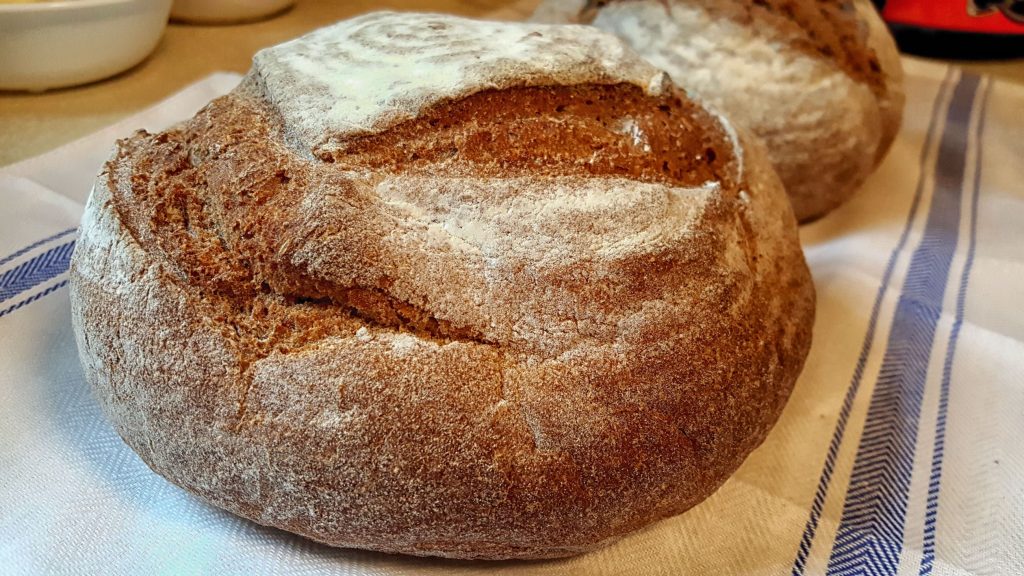
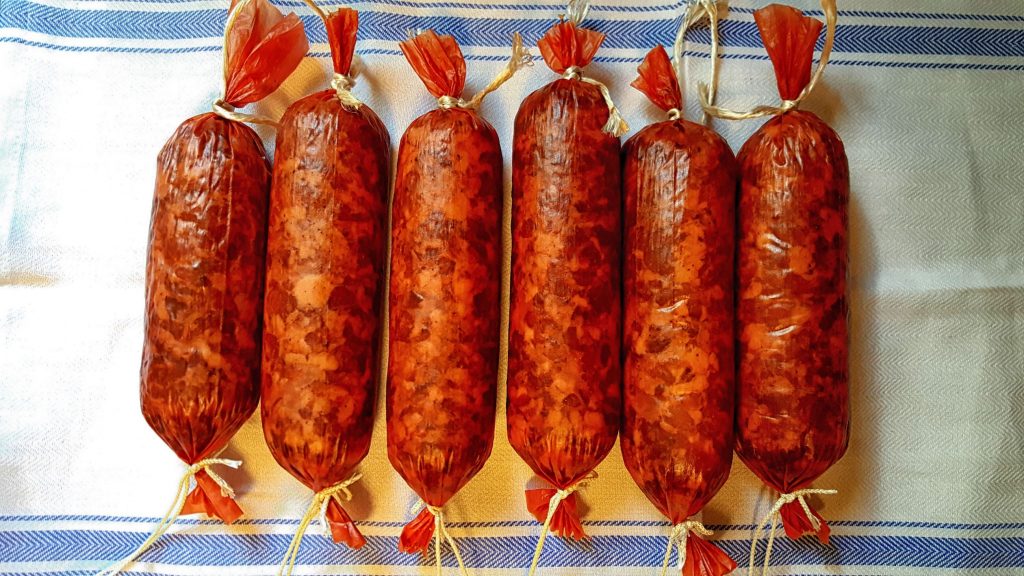




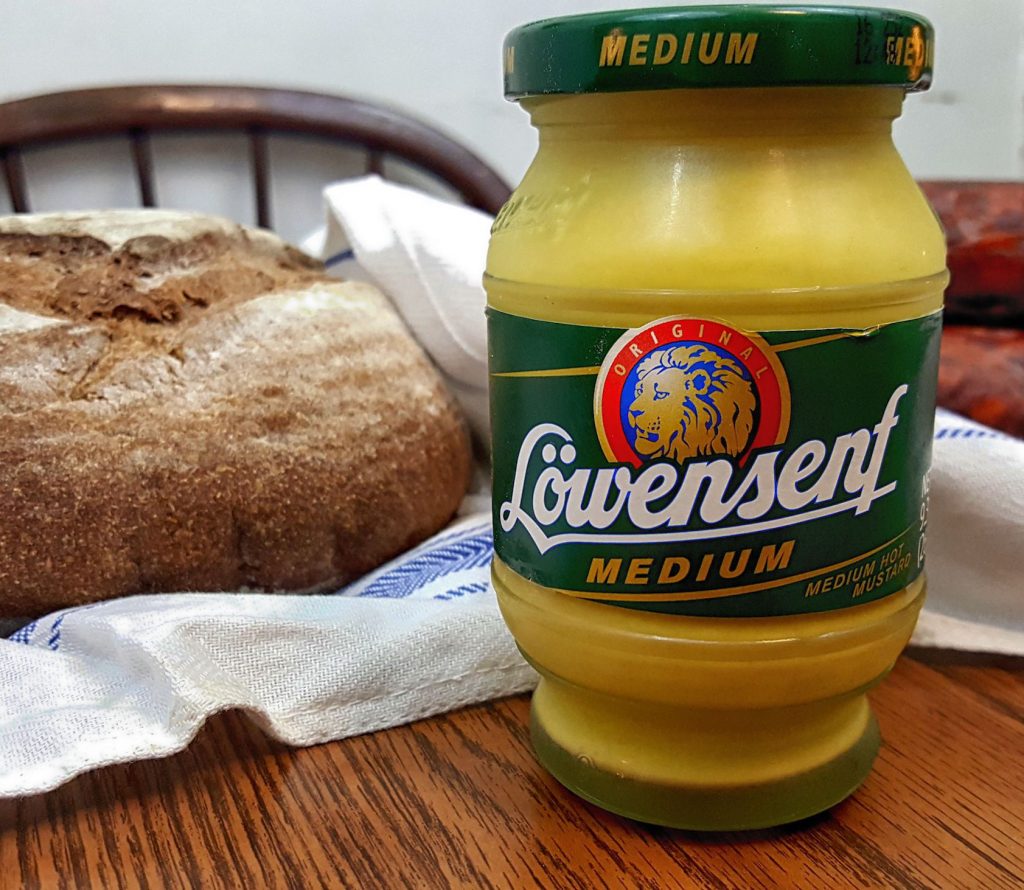
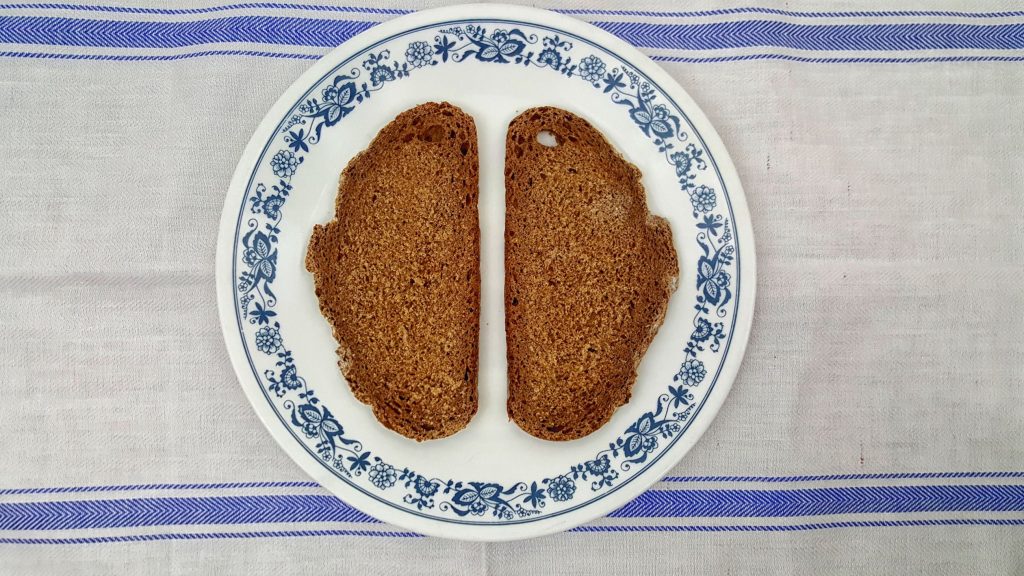
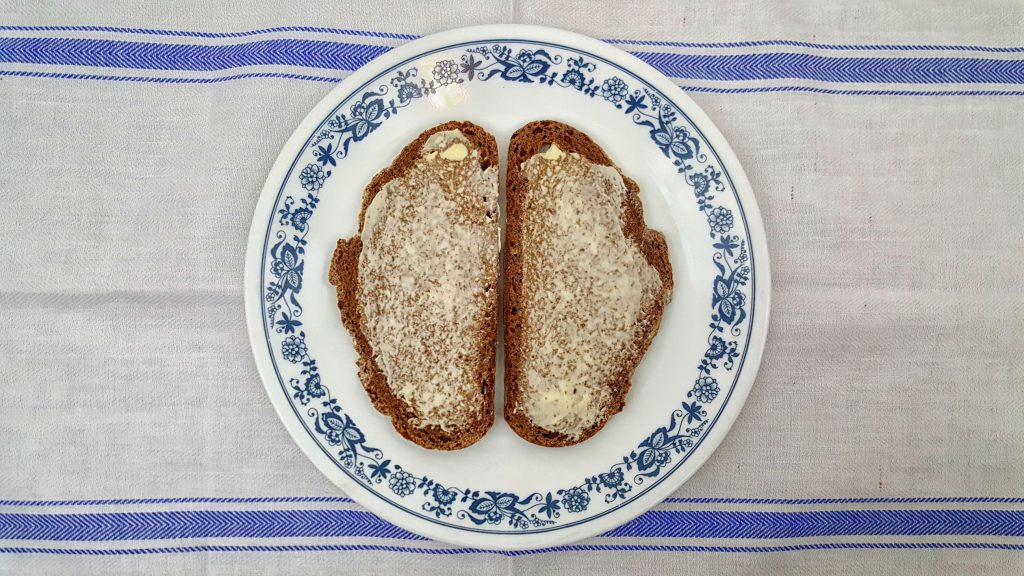
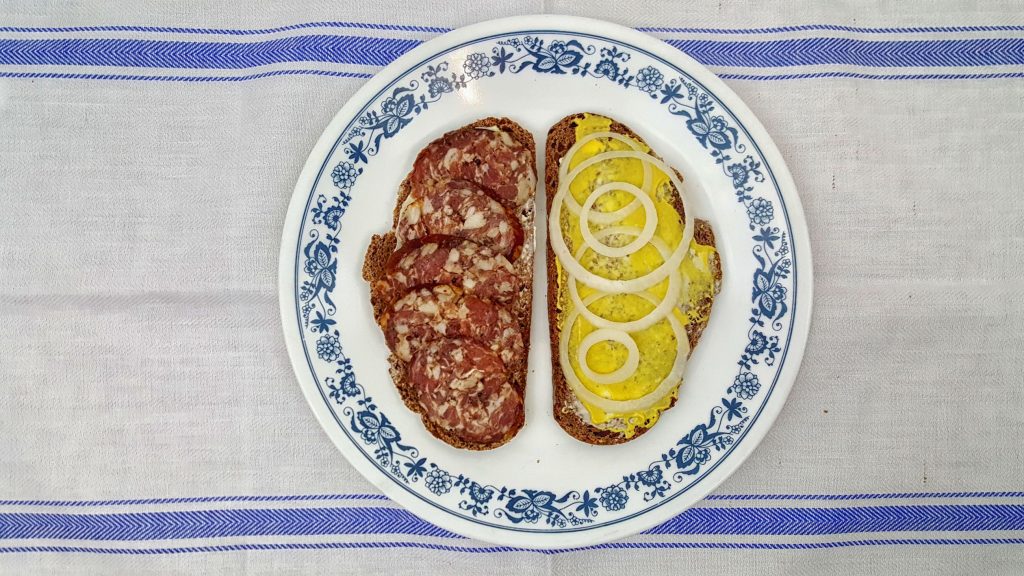
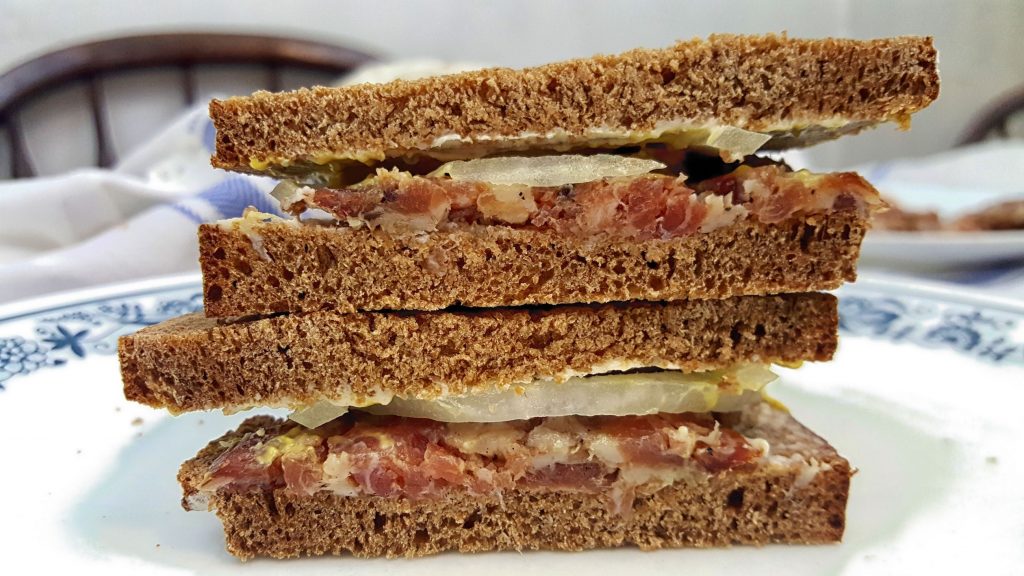

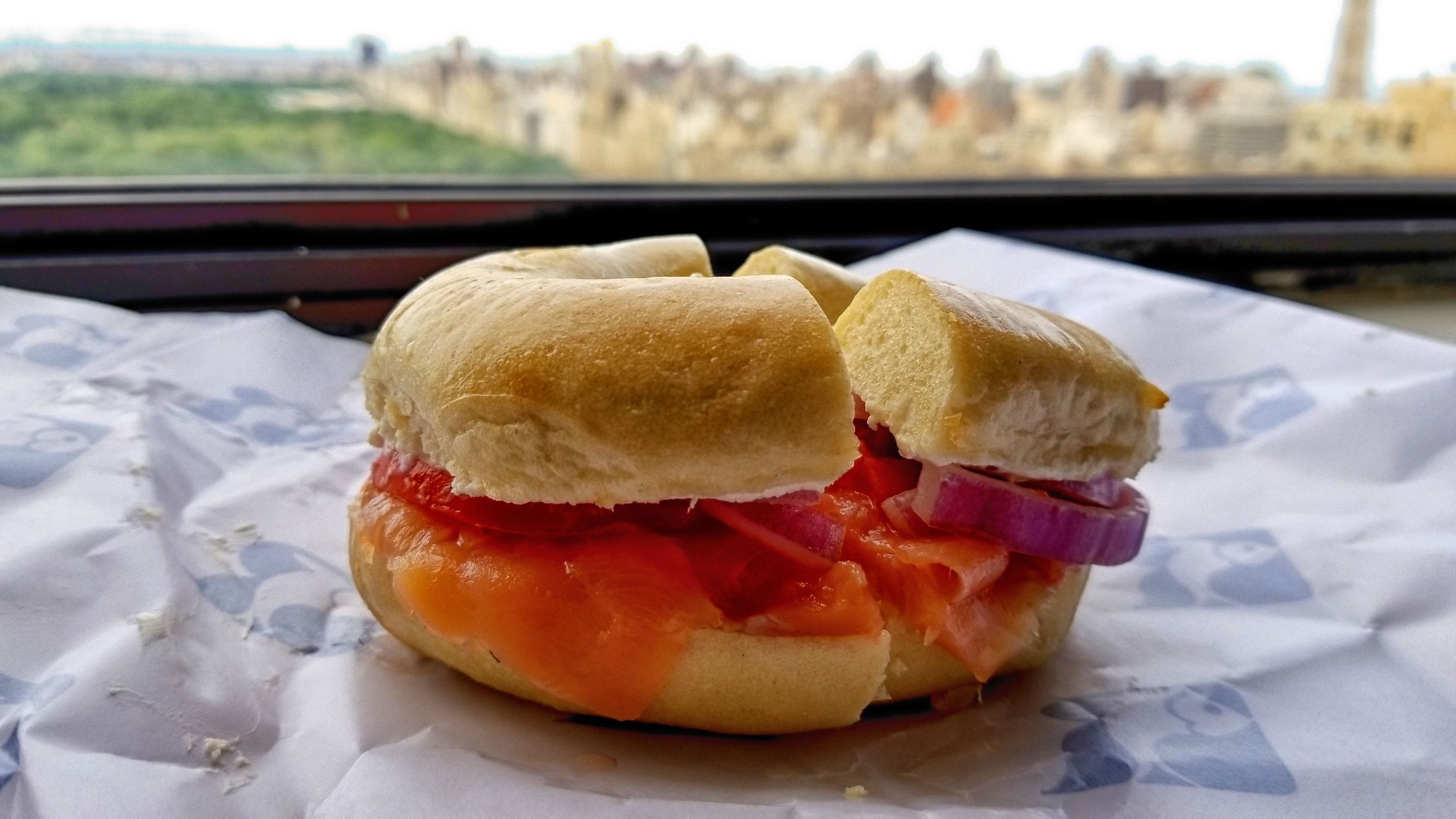







Recent Comments